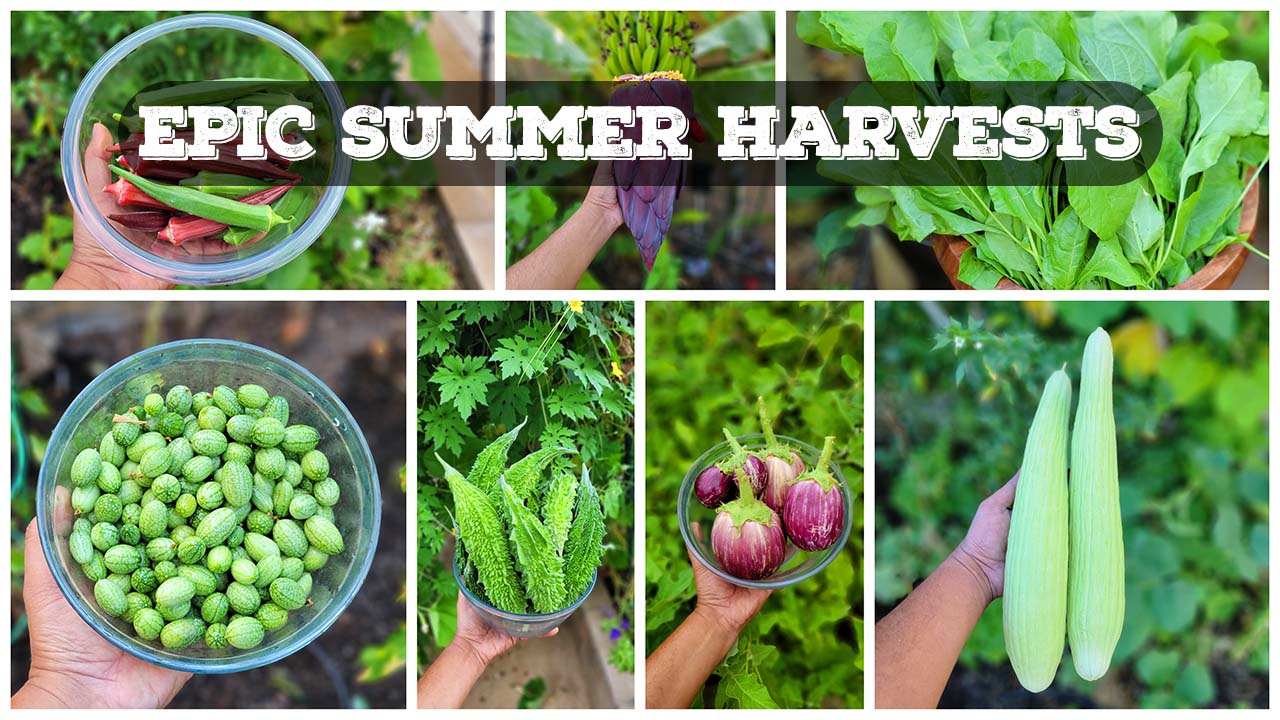
Welcome to the California Garden. In today’s episode we look at our bountiful September harvest, a tour of the California garden, and a lot of tips, tricks, and techniques along the way to make you a better gardener.
Harvests
So let’s begin with all the harvests we made this month beginning with ash gourd, or winter melon. Ash gourds are not only very delicious, but they’re also extremely good for your health.
Next are our Rajapuri bananas. At the end of the bananas, there’s a banana bud that can be harvested – if you haven’t tried eating banana bud or banana flowers, you must try it out, as they are extremely delicious and there are many online recipes involving them.
We were growing green beans on a trellis between the raised beds, which produced a lot of beans; pole beans will give you a lot more beans compared to bush beans because they grow over a larger area, and they grow very well between summer and fall. We also had some bush beans growing in a container which were yielding a lot of beans as well. With bush beans, several plants growing is necessary for optimal harvest, but with pole beans you can get away with a few plants. We were also growing bush beans in our GreenStalk planter. Overall, while the pole bean harvest far exceeded the bush beans harvest from our garden, bush beans are a good option because they take up less space.
We used the GreenStalk leaf planter to grow beets. The leaf planter has smaller pockets, but it also has a lot more pockets which is perfect for growing plants like beets. During the summer season, you can expect the beets to be slightly smaller than if you were to grow them during spring, or a cooler season.
One of our highest producing plants during this month was the bitter gourd, or the bitter melon. With just one plant, you can see how big the harvest is. These are self-pollinating plants, so they don’t need other plants and they can produce quite a lot of gourds. The best season to grow bitter gourds is during the hotter months of August and September.

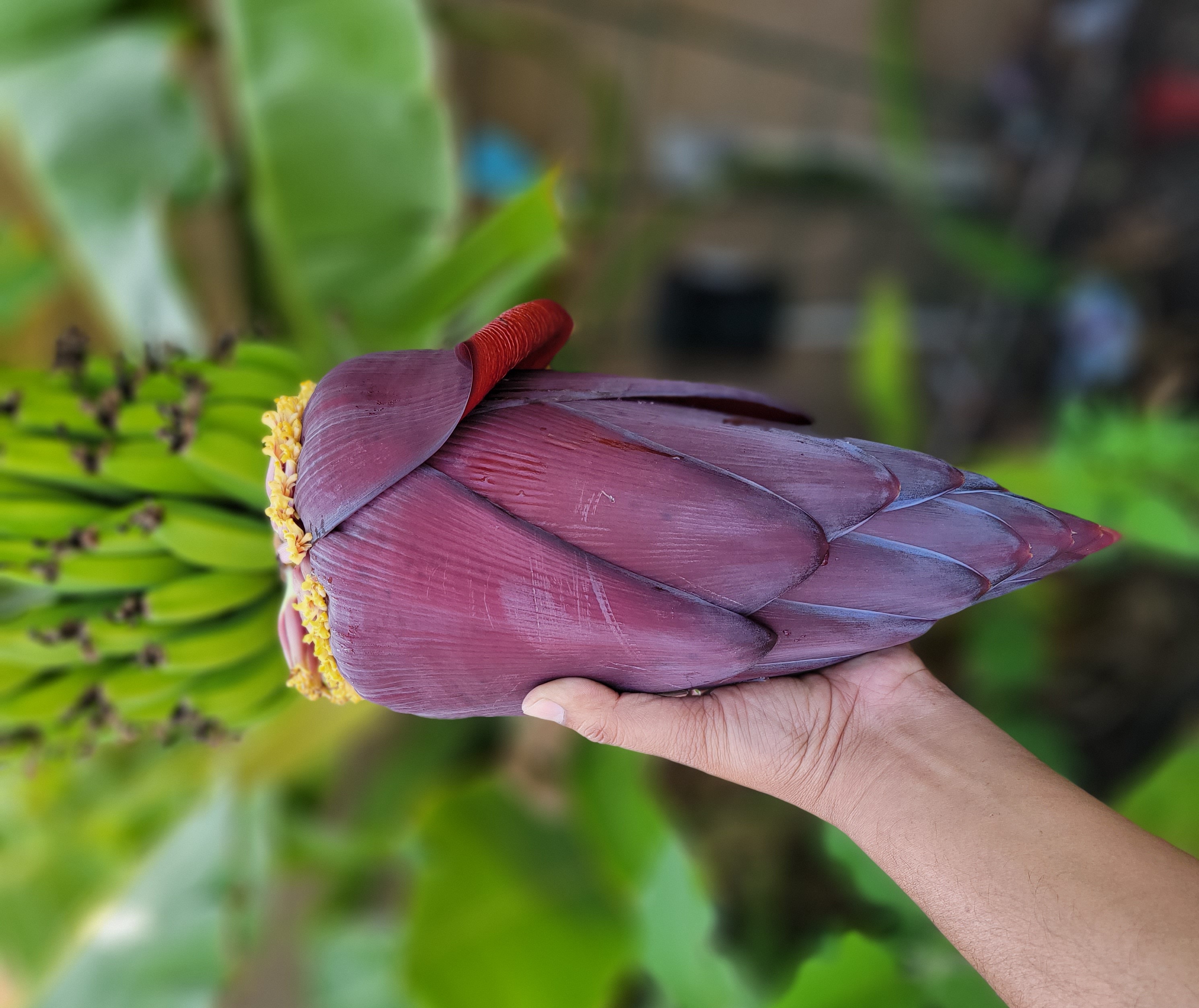
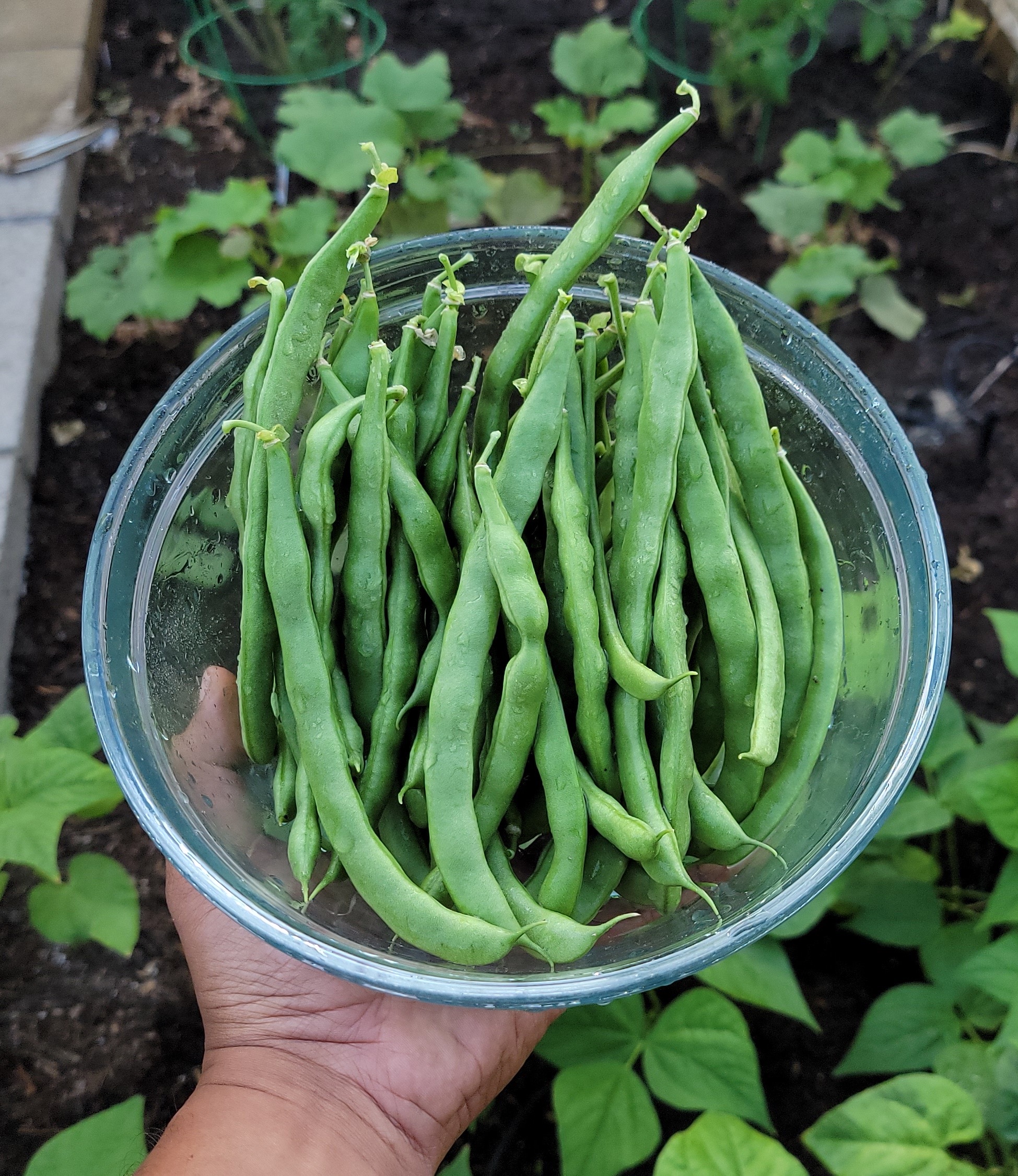
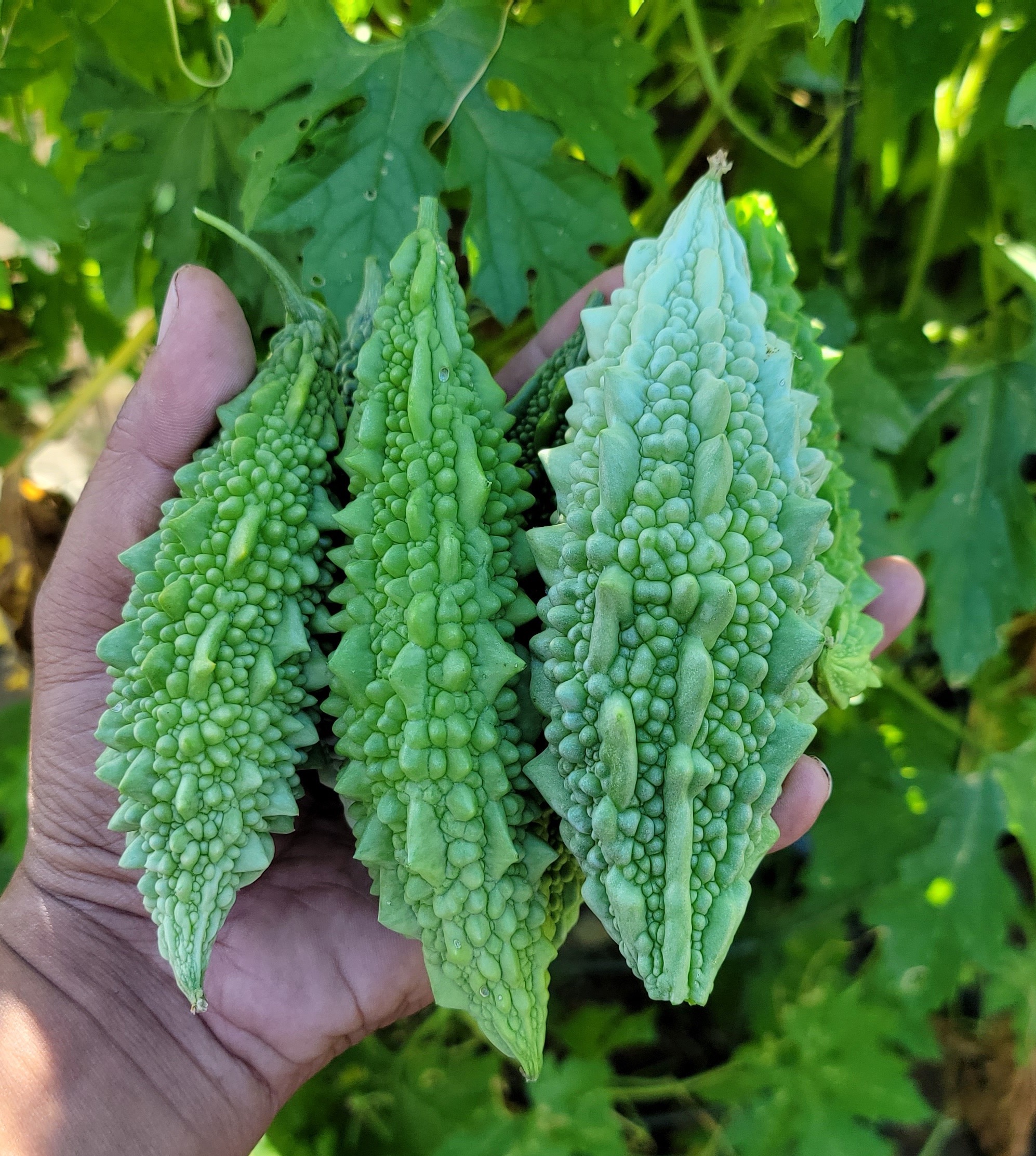
Moving on to our dwarf bitter gourd, which we were growing in a container. This variety is very similar to the larger bitter gourd in every way except size. These smaller gourds are great for stuffing dishes, so if you want to stuff the bitter gourd with some spices and potatoes and cook it, it’s really nice.
Another high producing vegetable from our garden this year is the bottle gourd, which is amazing because it produces extremely large gourds.
Cilantro is a cool season crop that can be harvested just by snipping the tops off the plant. When you harvest cilantro like this, it will just keep growing back. This is one herb that I highly recommend you grow in your home garden because fresh cilantro tastes absolutely amazing.
We were growing Armenian cucumbers in the ground right next to a faucet using a trellis to support it. Armenian cucumber plants produce extremely large cucumbers that are absolutely delicious.
We were growing a wide variety of eggplants in our GreenStalk planter, including the millionaire eggplant, Indian thorned eggplant, black moon eggplant, and Indian green eggplant. Eggplants are a perfect plant for the GreenStalk planter. All of our eggplant varieties were very bountiful and produced plenty of eggplants.
Our first ivy gourd, or tindora plant was growing in a container, from which we harvested quite a lot of ivy gourds. We also planted them in our raised bed, which occupied a lot more area. A trellis works very well for ivy gourds because the vines can grow on it and produce until the end of the season and then they’ll go dormant. These can continue to be harvested throughout the season, usually towards September or October after which they will slow down. These vegetables have a unique taste, which can be described as a spicy cucumber. There are a lot of online recipes for how to cook this vegetable.
Cucamelons, also called mouse melons, or the mexican sour gherkin, are extremely prolific plants that grow very well during the hot summer months. Cucamelons are quite small in size and are almost hidden inside the plant but once you get to harvest all the cucamelons, you can see that you get a large harvest. Cucamelon is like a tangier version of ivy gourd.



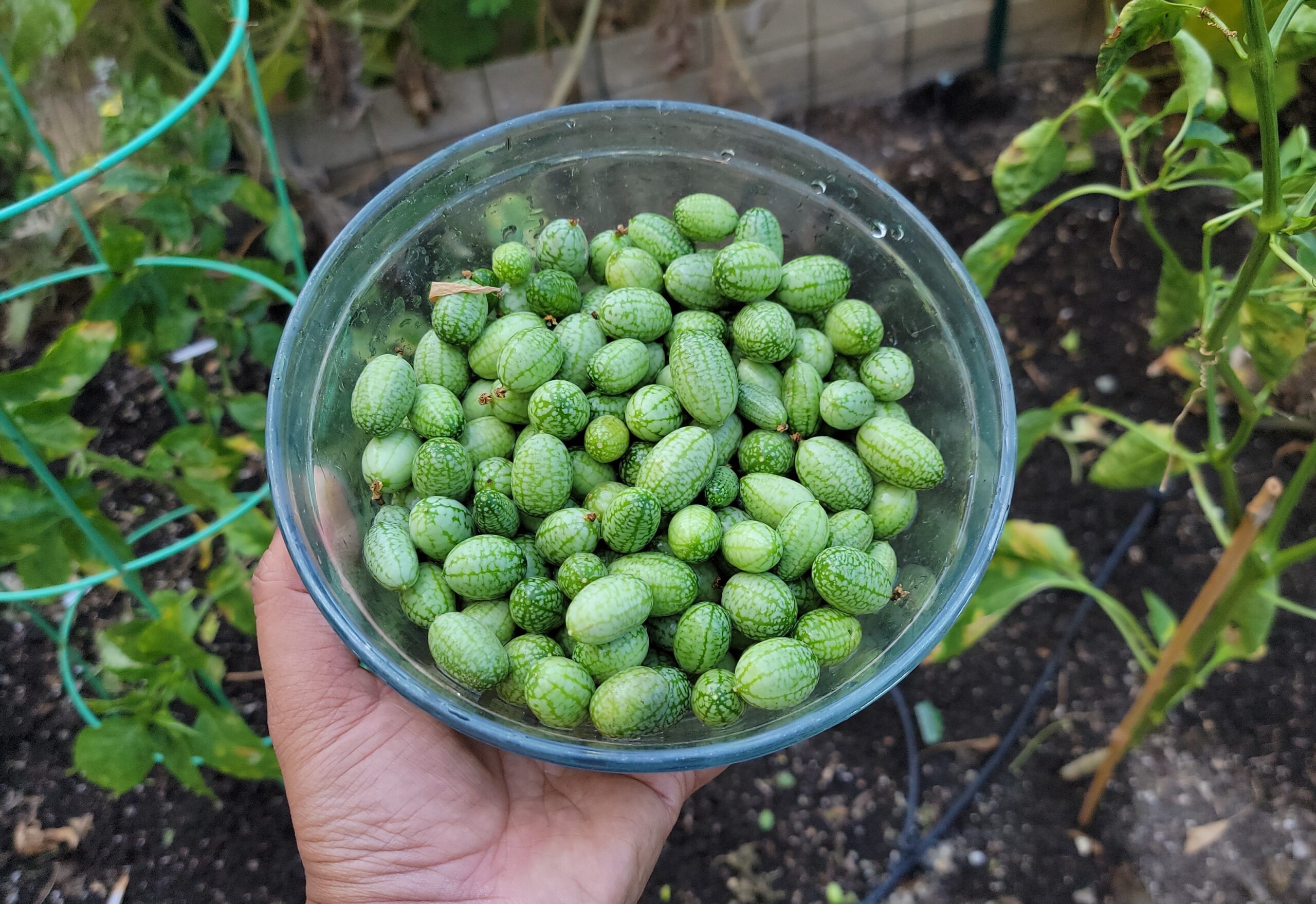
We were growing a few okra varieties in our raised bed, including the long green okra, red burgundy okra, and cajun okra. The okras that were growing on the raised bed were quite prolific. We were getting okras every few days from these plants, and it’s important to harvest your okras in time as they will continue to become more fibrous the longer you wait to harvest. We grew the Cajun okra in our GreenStalk planter, which reached almost five feet in height. These are quite large plants, and they were growing vertically, so they easily adapted to that space around the GreenStalk planter.
We grew a variety of peppers, including the Early Flame jalapeño, Italian pepper, and cayenne pepper. The jalapeño was grown in our GreenStalk planter, from which we harvested quite a lot. We grew Italian peppers in our raised bed, which yielded nicely sized peppers. However, these required heat, so we expect the yield to decrease until the hotter days of spring come along. We also grew cayenne peppers in the self-watering raised bed, which yielded well.
Snake gourd is an interesting vegetable that we grew in a container with the trellis supporting the vining plant. It yielded really well, and produced big gourds.
Our spinach plants were growing in a container, and grew from volunteer plants. Last year, a lot of seeds fell around this container and another one and almost all these plants are volunteer plants, and our spinach harvest was quite amazing.
Strawberry guavas are some of the most delicious fruits we’ve grown. These fruits are technically not guavas, but unsurprisingly they taste like a combination of guava and strawberry, producing a nice tropical taste. One plant yielded quite a lot of strawberry guavas, and we expect this plant to yield even more. The fruit is produced in clusters and yields well, so if you want a nice tropical tasting fruit, the strawberry guava should definitely be on the top of your gardening list. It is important to note that this plant does need some kind of support with some kind of trellis.
We were growing our watermelon plants around our fruit trees. When we harvested it you can see that the bottom is yellow. We do the knock test and the tendril test, which makes sure that your tendril is dried.

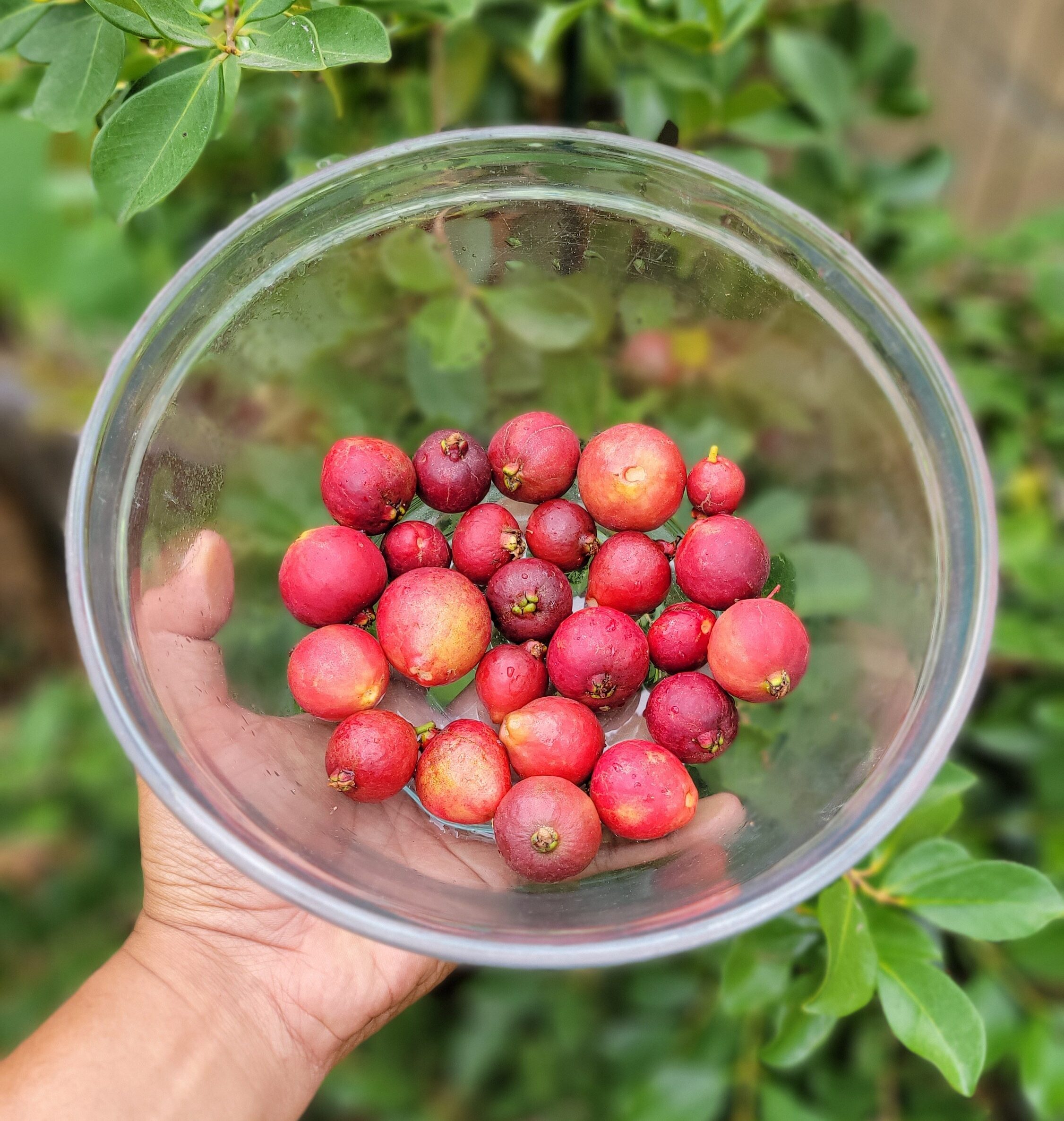
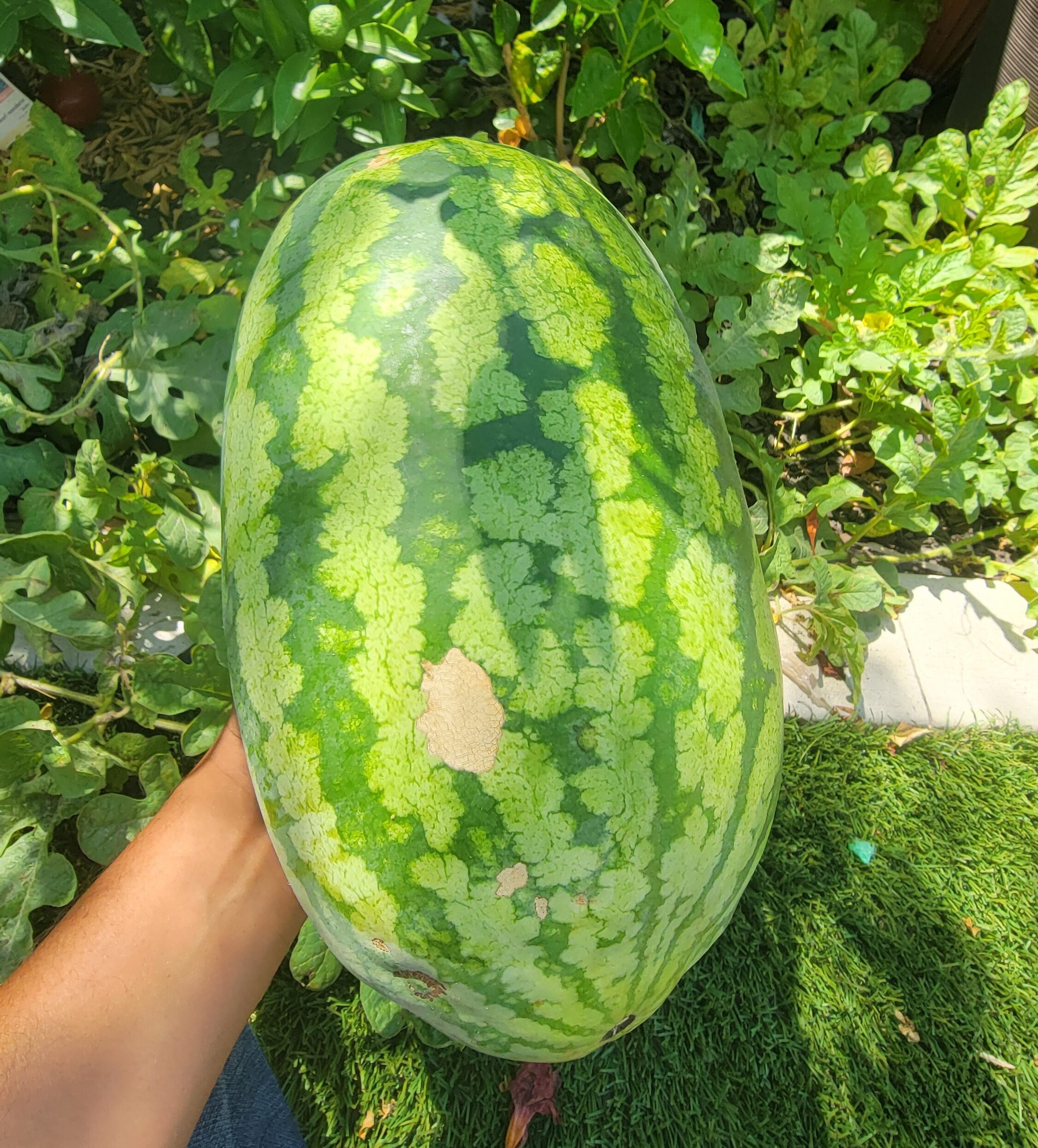
Garden Tour
In our first raised bed, we have a lot of tomatoes, eggplants, and peppers growing. The pepper plants have slowed down a little bit towards the end of their season. We also planted two new determinate tomato plants, which are already producing tomatoes. In between the trellis for these two beds, we have our pole beans growing.
In the next raised bed, we have sowed some radish seeds, and some seedlings have emerged. We have a couple of bush roma tomato plants that we have pruned and kept, and we are starting some new tomato plants soon. We also have some cajun okras and bush beans, which are towards the end of their season.
On the next raised bed, we finally covered it up with a mesh sheet and planted a lot of brassicas: cabbage, cauliflower, and broccoli. The mesh is meant to protect the brassicas from insects and diseases. The trellis next to the bed is loaded with bitter gourd and bottle gourd. We cleared up quite a lot of the leaves and stems and pruned it. We also have some corn and eggplant varieties growing.
On the last raised bed, we have some bull’s blood beets, bunching onions, ivy gourd, eggplants, and some more brassicas. That completes the tour of our raised bed garden.
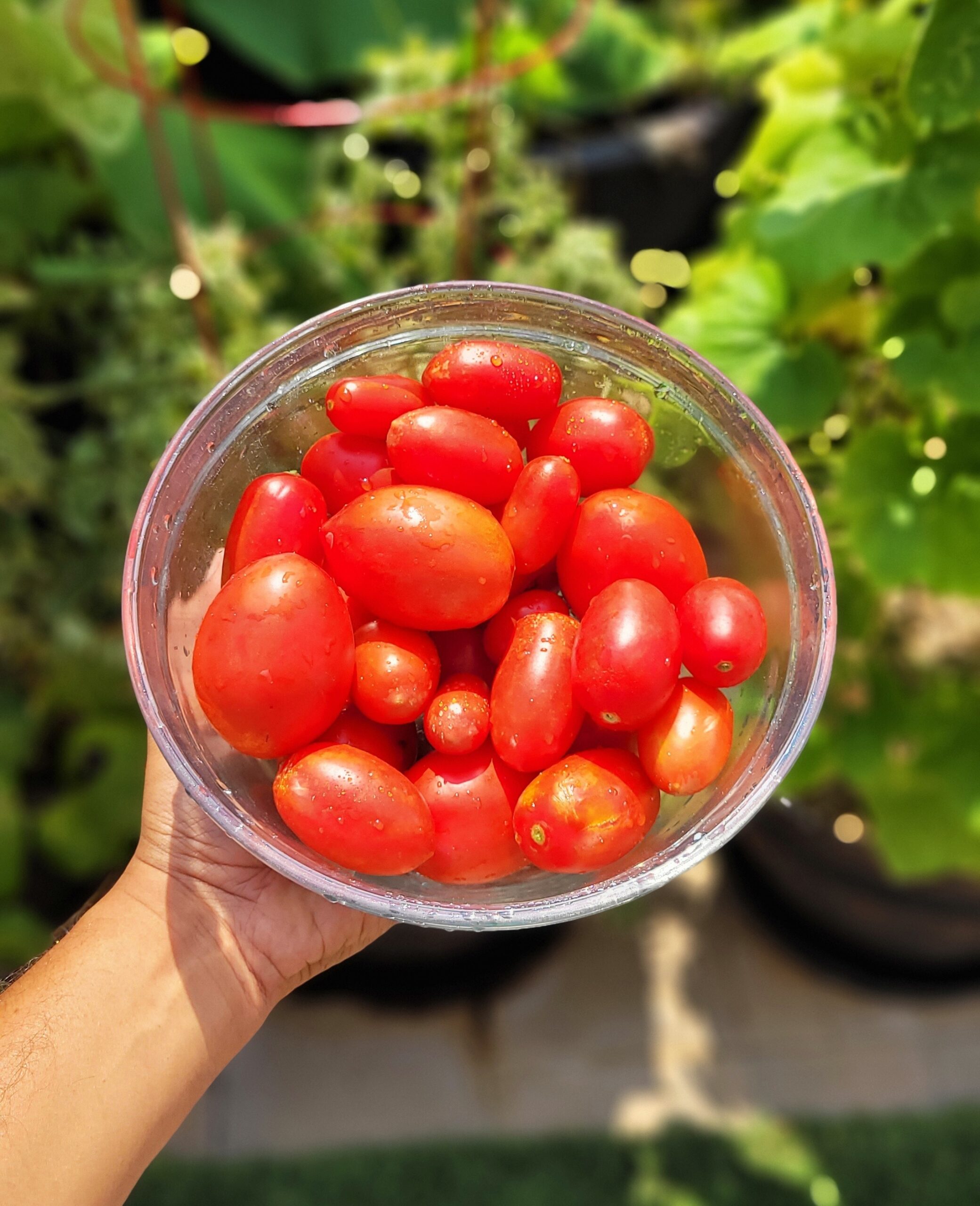
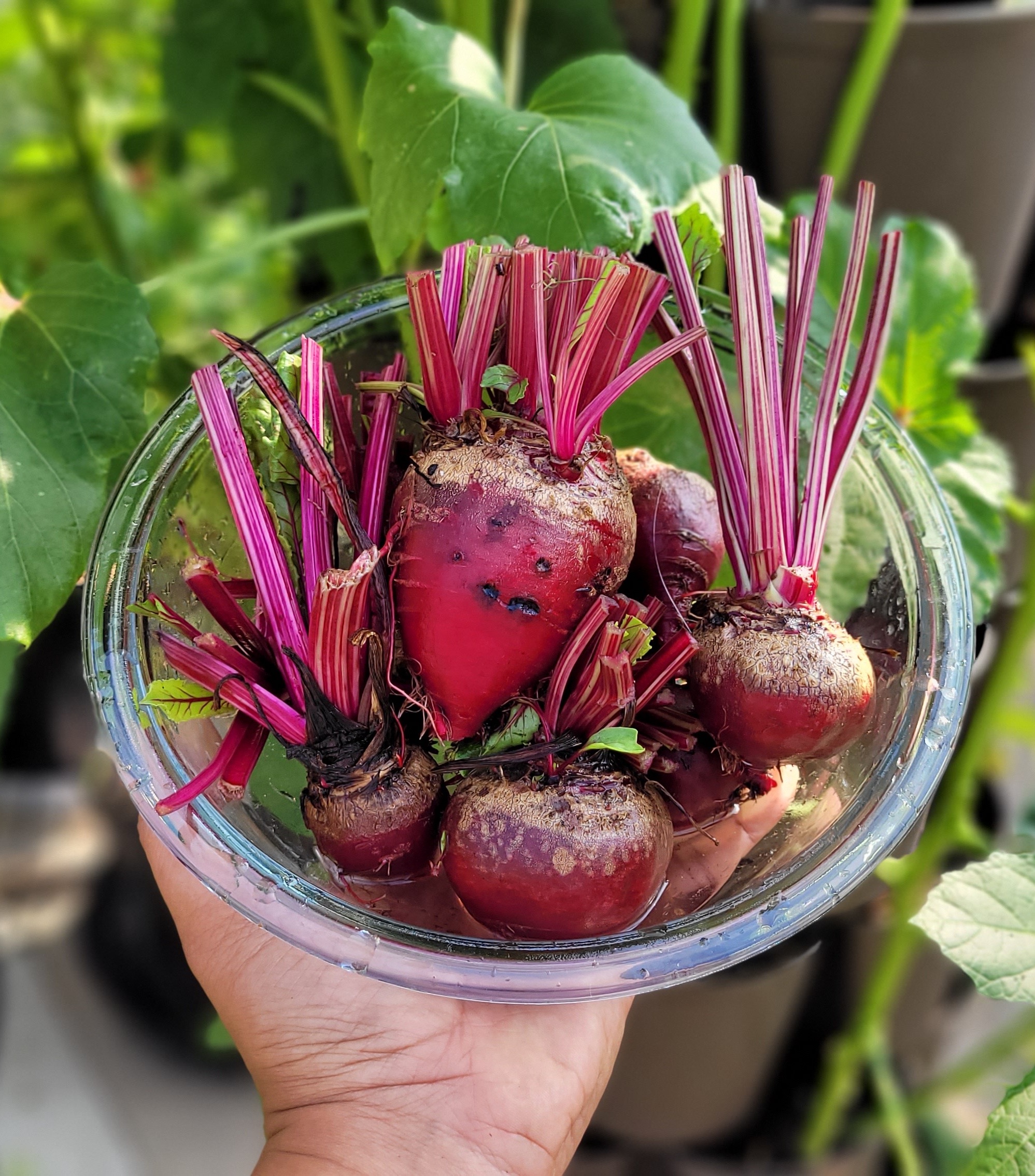
Let’s now move on to the containers. We have bush beans, Japanese cucumbers, lablab beans, carrot seeds, snake gourd, taro root, lettuce, sunchoke, hyacinth bean, mint, turmeric, beets, San Marzano tomatoes, bunching onions, black moon eggplant, dwarf bitter gourd, determinate tomatoes, and brassicas. The cucumber plant has grown quite large and is yielding really well. Our lablab beans plant is finally producing flowers, and it has grown quite massive. Unfortunately our carrot seeds didn’t germinate very well due to the heat. Our taro root plant was just recently transplanted. The rest of the containers are the same as before. We still have our pineapple guava tree, java plum tree, curry leaf tree, and lime tree.
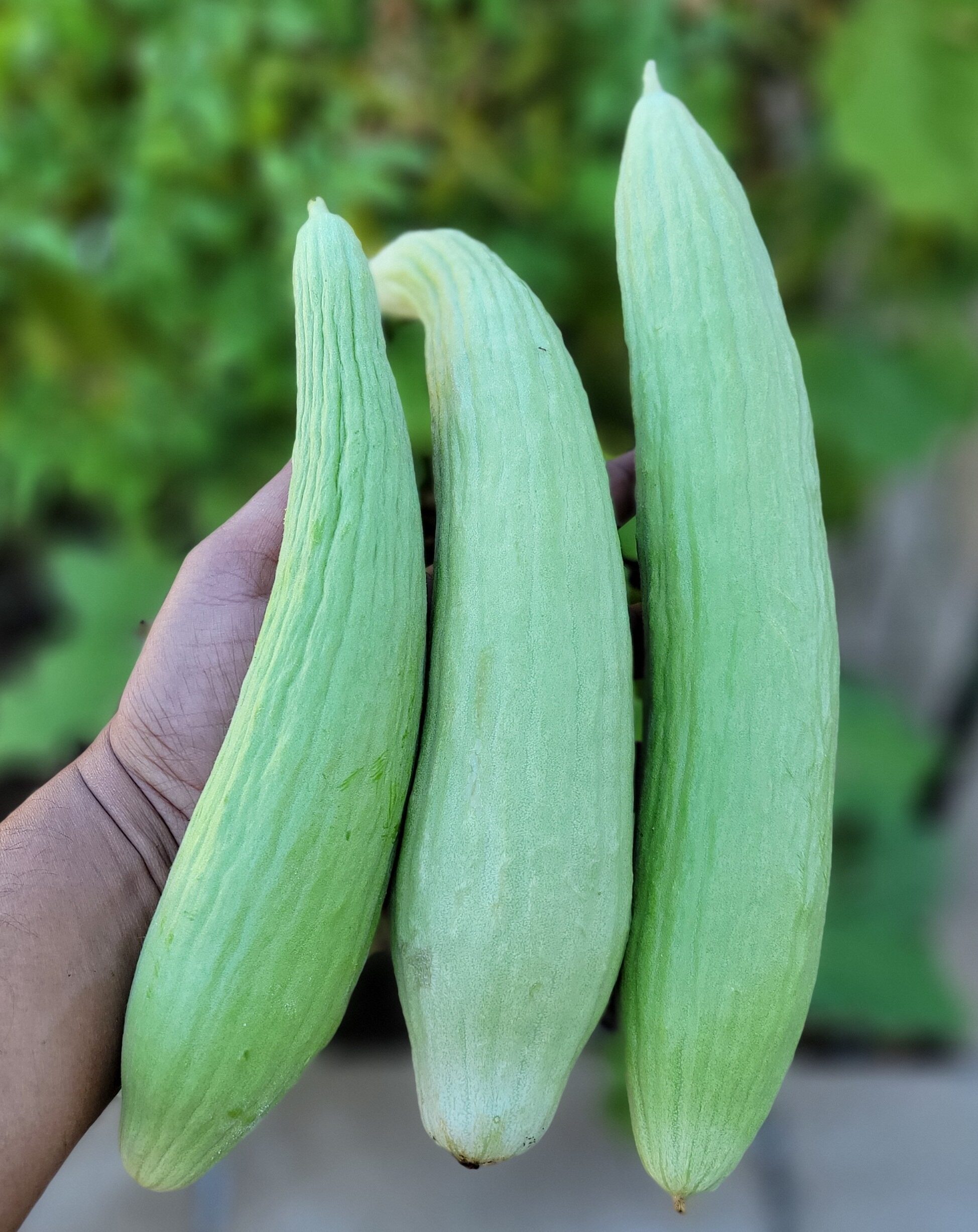
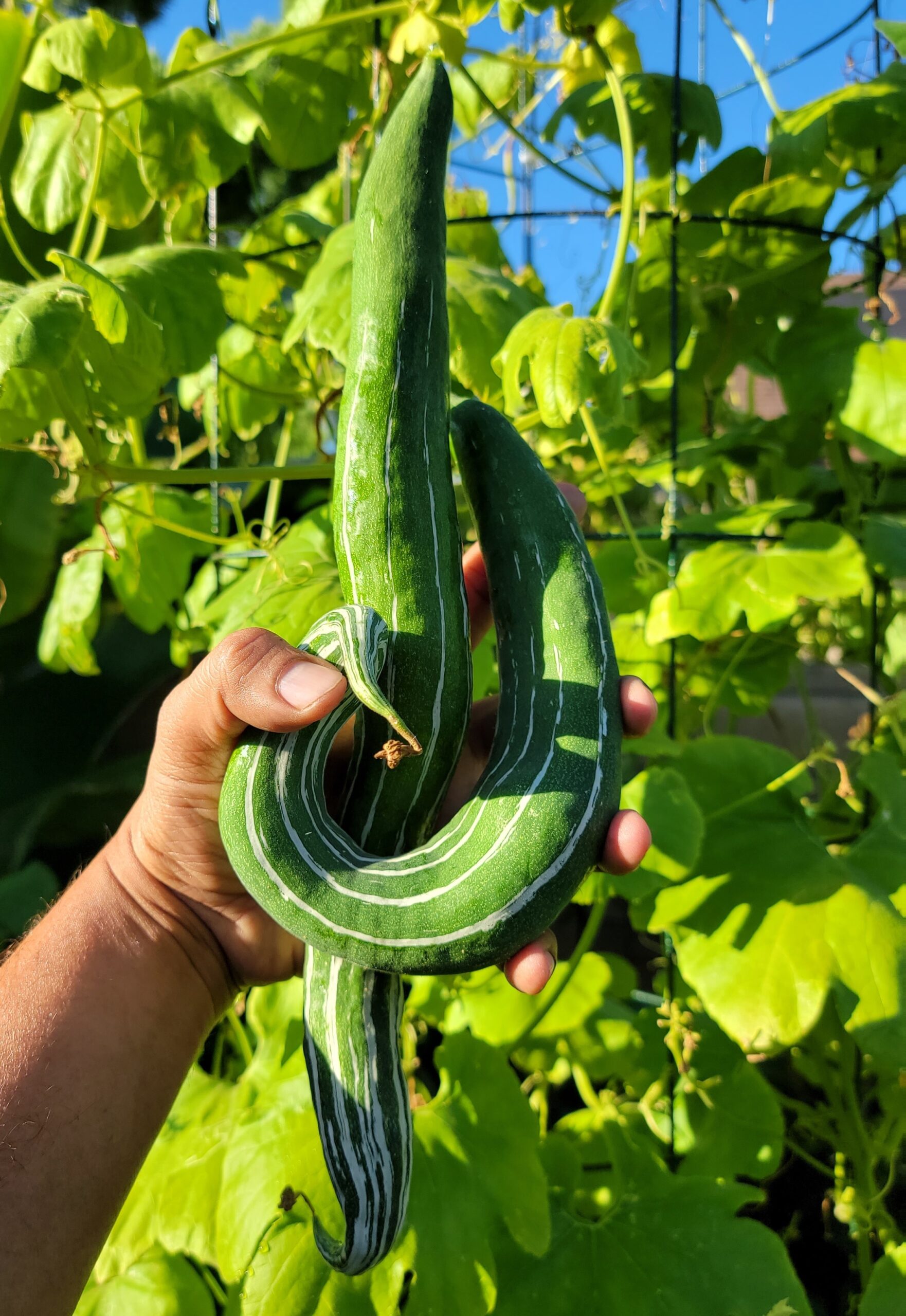
In our GreenStalk leaf planter, we grew a lot of cajun okras and planted some cilantro. There are also some peanuts growing along the planter. The GreenStalk leaf planter is quite unique, as it lets you grow a lot of plants in a small space. We removed everything from the summer season from the classic GreenStalk planter and added new potting mix, and we planted some onion sets here. That completes a tour of our container garden.
Happy Gardening! Watch our complete video at EPIC Harvests, Gardening Tips & A Lot More! – California Gardening September Garden Tour!

0 Comments